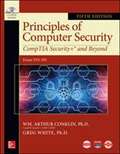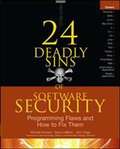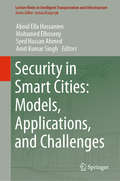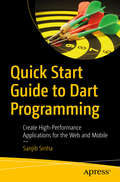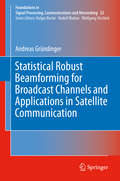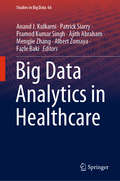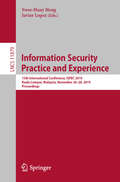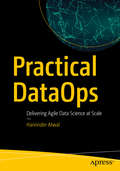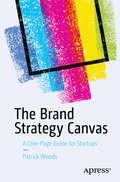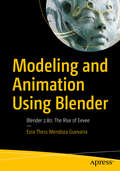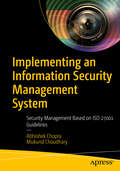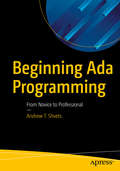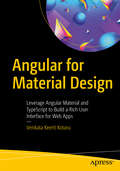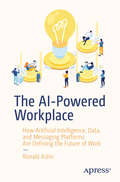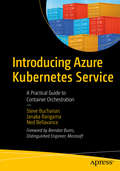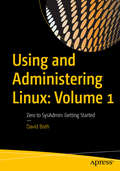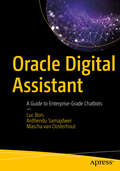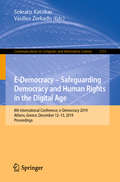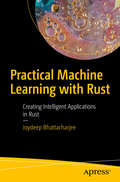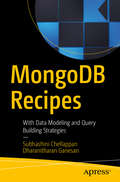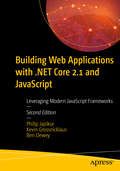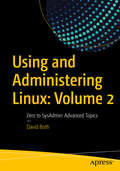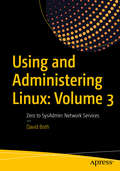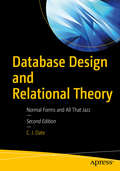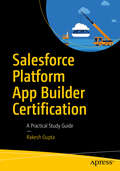- Table View
- List View
Principles of Computer Security: Comp TIA Security and Beyond
by Dwayne Williams Chuck Cothren Roger Davis Gregory White Wm. ConklinLearn IT security fundamentals while getting complete coverage of the objectives for the latest release of CompTIA Security+ certification exam SY0-501. This thoroughly revised, full-color textbook discusses communication, infrastructure, operational security, attack prevention, disaster recovery, computer forensics, and much more. Written by a pair of highly respected security educators, Principles of Computer Security: CompTIA Security+® and Beyond, Fifth Edition (Exam SY0-501) will help you pass the exam and become a CompTIA certified computer security expert.
24 Deadly Sins Of Software Security: Programming Flaws And How To Fix Them
by John Viega Michael Howard David LeBlancFully updated to cover the latest security issues, 24 Deadly Sins of Software Security reveals the most common design and coding errors and explains how to fix each one-or better yet, avoid them from the start. Michael Howard and David LeBlanc, who teach Microsoft employees and the world how to secure code, have partnered again with John Viega, who uncovered the original 19 deadly programming sins. They have completely revised the book to address the most recent vulnerabilities and have added five brand-new sins. This practical guide covers all platforms, languages, and types of applications. Eliminate these security flaws from your code:
Security in Smart Cities: Models, Applications, and Challenges (Lecture Notes in Intelligent Transportation and Infrastructure)
by Syed Hassan Ahmed Aboul Ella Hassanien Amit Kumar Singh Mohamed ElhosenyThis book offers an essential guide to IoT Security, Smart Cities, IoT Applications, etc. In addition, it presents a structured introduction to the subject of destination marketing and an exhaustive review on the challenges of information security in smart and intelligent applications, especially for IoT and big data contexts. Highlighting the latest research on security in smart cities, it addresses essential models, applications, and challenges.Written in plain and straightforward language, the book offers a self-contained resource for readers with no prior background in the field. Primarily intended for students in Information Security and IoT applications (including smart cities systems and data heterogeneity), it will also greatly benefit academic researchers, IT professionals, policymakers and legislators. It is well suited as a reference book for both undergraduate and graduate courses on information security approaches, the Internet of Things, and real-world intelligent applications.
Quick Start Guide to Dart Programming: Create High-Performance Applications for the Web and Mobile
by Sanjib SinhaGet started with Dart and learn to program with this language suitable for high-performing, modern applications. You'll gain the basics and be ready to move to the next level: web and mobile apps. While you won't learn the specifics of programming web and mobile apps, you will have the foundation to take your Dart skills in that direction.This book starts with an introduction to the Dart IDE, after which you will take a look at the various components of the Dart programming language. You will look at types and variables, and get to know the significance of collections and arrays in Dart. Once you've familiarized yourself with the initial components of Dart, you will see how flow of control and looping can be achieved by using if, else, and conditional expressions. Moving on to functions and objects, you will dig deeper into the concepts of object oriented programming to gauge the importance of constructors in Dart. You will then discover more about inheritance and mixins, seeing how they contain methods for use by other classes. After gauging the importance of abstract classes and methods, you will learn more about anonymous functions such as lambdas and closures. You will then take a look at key data structures including lists and maps to aid you in organizing your information for storage and retrieval. After all this you’ll move on to managing exceptions arising from executing your program. Finally, Dart programming relies heavily on libraries to perform a variety of functions. You will cover some of these packages and libraries, including dart:core and dart:math, and also build a backend server with the help of the Dart core libraries. What You Will Learn Use variables and conditionals in DartWork with arrays and collections Apply flow control and loopingExplore data structures and their useHandle exceptionsUse Dart packages and libraries to build a backend serverWho This Book Is ForThose new to Dart programming who aim to get a quick introduction to its concepts and programming principles. Readers with no coding experience can also take advantage of this book.
Statistical Robust Beamforming for Broadcast Channels and Applications in Satellite Communication (Foundations in Signal Processing, Communications and Networking #22)
by Andreas GründingerThis book investigates adaptive physical-layer beamforming and resource allocation that ensure reliable data transmission in the multi-antenna broadcast channel. The book provides an overview of robust optimization techniques and modelling approximations to deal with stochastic performance metrics. One key contribution of the book is a closed-form description of the achievable rates with unlimited transmit power for a rank-one channel error model. Additionally, the book provides a concise duality framework to transform mean square error (MSE) based beamformer designs, e.g., quality of service and balancing optimizations, into equivalent uplink filter designs. For the algorithmic solution, the book analyses the following paradigm: transmission to receivers with large MSE targets (low demands) is switched off if the transmit power is low. The book also studies chance constrained optimizations for limiting the outage probability. In this context, the book provides two novel conservative outage probability approximations, that result in convex beamformer optimizations. To compensate for the remaining inaccuracy, the book introduces a post-processing power allocation. Finally, the book applies the introduced beamformer designs for SatCom, where interference from neighboring spotbeams and channel fading are the main limitations.
Big Data Analytics in Healthcare (Studies in Big Data #66)
by Ajith Abraham Patrick Siarry Albert Zomaya Anand J. Kulkarni Mengjie Zhang Pramod Kumar Singh Fazle BakiThis book includes state-of-the-art discussions on various issues and aspects of the implementation, testing, validation, and application of big data in the context of healthcare. The concept of big data is revolutionary, both from a technological and societal well-being standpoint. This book provides a comprehensive reference guide for engineers, scientists, and students studying/involved in the development of big data tools in the areas of healthcare and medicine. It also features a multifaceted and state-of-the-art literature review on healthcare data, its modalities, complexities, and methodologies, along with mathematical formulations. The book is divided into two main sections, the first of which discusses the challenges and opportunities associated with the implementation of big data in the healthcare sector. In turn, the second addresses the mathematical modeling of healthcare problems, as well as current and potential future big data applications and platforms.
Information Security Practice and Experience: 15th International Conference, ISPEC 2019, Kuala Lumpur, Malaysia, November 26–28, 2019, Proceedings (Lecture Notes in Computer Science #11879)
by Javier Lopez Swee-Huay HengThis book constitutes the refereed proceedings of the 15th International Conference on Information Security Practice and Experience, ISPEC 2019, held in Kuala Lumpur, Malaysia, in November 2019. The 21 full and 7 short papers presented in this volume were carefully reviewed and selected from 68 submissions. They were organized into the following topical sections: Cryptography I, System and Network Security, Security Protocol and Tool, Access Control and Authentication, Cryptography II, Data and User Privacy, Short Paper I, and Short Paper II.
Practical DataOps: Delivering Agile Data Science at Scale
by Harvinder AtwalGain a practical introduction to DataOps, a new discipline for delivering data science at scale inspired by practices at companies such as Facebook, Uber, LinkedIn, Twitter, and eBay. Organizations need more than the latest AI algorithms, hottest tools, and best people to turn data into insight-driven action and useful analytical data products. Processes and thinking employed to manage and use data in the 20th century are a bottleneck for working effectively with the variety of data and advanced analytical use cases that organizations have today. This book provides the approach and methods to ensure continuous rapid use of data to create analytical data products and steer decision making.Practical DataOps shows you how to optimize the data supply chain from diverse raw data sources to the final data product, whether the goal is a machine learning model or other data-orientated output. The book provides an approach to eliminate wasted effort and improve collaboration between data producers, data consumers, and the rest of the organization through the adoption of lean thinking and agile software development principles.This book helps you to improve the speed and accuracy of analytical application development through data management and DevOps practices that securely expand data access, and rapidly increase the number of reproducible data products through automation, testing, and integration. The book also shows how to collect feedback and monitor performance to manage and continuously improve your processes and output. What You Will LearnDevelop a data strategy for your organization to help it reach its long-term goalsRecognize and eliminate barriers to delivering data to users at scaleWork on the right things for the right stakeholders through agile collaborationCreate trust in data via rigorous testing and effective data managementBuild a culture of learning and continuous improvement through monitoring deployments and measuring outcomesCreate cross-functional self-organizing teams focused on goals not reporting linesBuild robust, trustworthy, data pipelines in support of AI, machine learning, and other analytical data productsWho This Book Is ForData science and advanced analytics experts, CIOs, CDOs (chief data officers), chief analytics officers, business analysts, business team leaders, and IT professionals (data engineers, developers, architects, and DBAs) supporting data teams who want to dramatically increase the value their organization derives from data. The book is ideal for data professionals who want to overcome challenges of long delivery time, poor data quality, high maintenance costs, and scaling difficulties in getting data science output and machine learning into customer-facing production.
The Brand Strategy Canvas: A One-Page Guide for Startups
by Patrick WoodsLaunching a startup is now easier than ever before. Building a lasting brand, however, remains a mystery for even the savviest of founders. An impactful, recognizable brand is perhaps a company’s most valuable intellectual property. And any strong brand starts with a strategy.The Brand Strategy Canvas has arrived to coach you beyond buzzword-laden tips and tricks, and instead offers you thorough, practical techniques to jump-start your strategy creation process. Author Patrick Woods distills fundamental questions to guide your strategy into a revolutionary single-page tool known as the titular Brand Strategy Canvas. The book takes you through each of the simple yet thought-provoking questions of the tool to develop your strategy, including considering audience insight, assessing benefits, creating a positioning statement, and identifying key messages. You will explore real-world case studies along the way and build a message map that ensures your organization drives home a consistent, clear, and authentic message to your target audience. No matter where you are in the business creation process, The Brand Strategy Canvas is the tool you need to build a brand from scratch that you can enthusiastically and effectively implement in real time. This book provides value to team members in companies of all sizes and stages, and is fit for any level of professional wanting to kickstart their entrepreneurial goals. A brand created today must be built for all of tomorrow’s possibilities, and The Brand Strategy Canvas is the book you will want by your side. What You Will LearnExamine the key differences between strategy and executionUnderstand how you can avoid brand debtCraft meaningful messages with the Features>Benefits ContinuumDevelop a positioning statement that differentiates from the competition and inspires your marketingDiscover your distinctive brand personality and how it impacts your marketing Equip your team with guidance and inspiration to ensure consistent and inspiring voice and personality throughout all your messaging Who This Book Is For This book is for startup founders who are looking for tools to help them build a brand their team can actually implement. This book will also resonate with and provide value to team members in tech companies of all sizes and stages.
Modeling and Animation Using Blender: Blender 2.80: The Rise of Eevee
by Ezra Thess GuevarraDiscover the 3D-modeling and animation power of Blender 3D. This book starts with a brief introduction to Blender 3D including installation and the user interface. The following two chapters then introduce you to the upgraded tools in Blender 2.80 for 3D modeling, texturing, shading, and animation. The last chapter discusses the Blender game engine and all its core features. Along the way you’ll see why Blender 3D has proved its competency in UV unwrapping, texturing, raster graphic editing, rigging, sculpting, animating, motion graphics, and video editing through the years. Modeling and Animation Using Blender gives a thorough tour of Blender Eevee, covering its new features and how to make best use of them. After reading this book you will have the confidence to choose Blender for your next project. What You Will Learn Master the features of Blender EeveeWork with modeling, animation, and much more using the updated softwareUnderstand important concepts such as physics and particles Who This Book Is For Art enthusiasts and professionals who want to learn Blender 3D. Blender 3D professionals who want to learn about the latest version would find the book useful.
Implementing an Information Security Management System: Security Management Based on ISO 27001 Guidelines
by Mukund Chaudhary Abhishek ChopraDiscover the simple steps to implementing information security standards using ISO 27001, the most popular information security standard across the world. You’ll see how it offers best practices to be followed, including the roles of all the stakeholders at the time of security framework implementation, post-implementation, and during monitoring of the implemented controls. Implementing an Information Security Management System provides implementation guidelines for ISO 27001:2013 to protect your information assets and ensure a safer enterprise environment. This book is a step-by-step guide on implementing secure ISMS for your organization. It will change the way you interpret and implement information security in your work area or organization. What You Will LearnDiscover information safeguard methodsImplement end-to-end information securityManage risk associated with information securityPrepare for audit with associated roles and responsibilitiesIdentify your information riskProtect your information assetsWho This Book Is ForSecurity professionals who implement and manage a security framework or security controls within their organization. This book can also be used by developers with a basic knowledge of security concepts to gain a strong understanding of security standards for an enterprise.
Beginning Ada Programming: From Novice to Professional
by Andrew T. ShvetsDiscover the Ada programming language by being gently guided through the various parts of the language and its latest available stable release. The goal in this book is to slowly ease you into the different topics. It is understood that you do not always have ample free time, so the text is easy to digest and concepts are spoon fed to the reader. Starting with the simplest of topics, detailed explanations demonstrate the how and why of Ada. You are strongly encouraged to experiment and break things (without which the learning process is linear and quite dull). At the end of Beginning Ada Programming, you will have an excellent understanding of the general topics that make up the Ada programming language and can tackle far more challenging topics. Each chapter builds on what was previously described. Furthermore, each code example is independent of others and will run all by itself. Instructions are provided where you can obtain an Ada compiler and how to debug your code. What You Will Learn Master basic types, control structures, procedures, and functions in AdaUse Ada arrays, records, and access typesImplement OO programming using AdaHandle the basics of I/O and interfacing with the operating systemTake advantage of string operators, data containers, multiprocessing with tasks, and moreWork with contracts and proofs, networks, and various Ada libraries Who This Book Is For Programmers who are new to Ada, with at least some experience in programming, especially scientific programming.
Angular for Material Design: Leverage Angular Material and TypeScript to Build a Rich User Interface for Web Apps
by Venkata Keerti KotaruBuild Angular applications faster and better with TypeScript and Material Design. You will learn how to build a web interface and use Google's open source Angular Material library of ready-made and easy-to-use components.This book uses Angular with TypeScript (a superset to JavaScript) to enable use of data types and take advantage of programming constructs such as classes, interfaces, generic templates, and more. You also will utilize various Angular features, including data binding, components, services, etc. You will build a single page application with the help of routing capabilities available out of the box (Angular CLI) and interface with remote services over HTTP.What You Will LearnBuild an application using Angular, TypeScript, and Angular MaterialUnderstand Angular concepts such as components, directives, services, and moreUse TypeScript features, including data types, classes, interfaces, generic templates, etc.Build a single page application (SPA) with routing features and integrate it with server-side remote servicesWho This Book Is ForBeginning to intermediate level professionals will learn about web development using Angular, TypeScript, and Angular Material. Patterns and practices are recommended to be a successful developer. Basic knowledge of JavaScript is helpful.
The AI-Powered Workplace: How Artificial Intelligence, Data, and Messaging Platforms Are Defining the Future of Work
by Ronald AshriWe are entering the next wave of digital transformation. Artificial intelligence has an ever-increasing significance in our daily lives, and there is no difference when it comes to our workplaces. It is up to you to choose how to utilize these new tools to sharpen your organization’s competitive advantage, improve your team’s well-being, and help your business thrive. In The AI-Powered Workplace, author Ronald Ashri provides a map of the digital landscape to guide you on this timely journey. You’ll understand how the combination of AI, data, and conversational collaboration platforms—such as Slack, Microsoft Teams, and Facebook Workplace—is leading us to a radical shift in how we communicate and solve problems in the modern workplace. Our ability to automate decision-making processes through the application of AI techniques and through modern collaboration tools is a game-changer. Ashri skillfully presents his industry expertise and captivating insights so you have a thorough understanding of how to best combine these technologies with execution strategies that are optimized to your specific needs. The AI-Powered Workplace is an essential technical, cultural, and business handbook that arms you with clear steps to redefine and improve how you get work done. Software is now a proactive workplace partner revolutionizing all aspects of our professional lives from how we collaborate in the digital sphere to the literal physical environments in which we operate our business. This book not only ensures that you do not get left behind, but that you are consistently light years ahead of the pack.What You'll LearnLearn how the introduction of AI-powered applications in the workplace replaces or augments our capabilities and enables activities that were not possible beforeRealize how the combination of AI, data, and messaging platforms (Slack, Microsoft Teams, Skype, WhatsApp) leads to a radical shift in how we communicate, collaborate, and solve problemsDevelop strategies for the digital transformation of organizations through the use of AI-powered applications (from simple chatbots to more complex conversational applications) that operate within messaging environments we use to collaborate with our colleagues dailyKnow the dangers and ethical questions that the introduction of these technologies can cause in the workplace Who This Book is ForProfessionals at all levels interested in learning how AI, conversational platforms, and data can change organizations, including but not limited to team leaders, managers, and CxOs
Introducing Azure Kubernetes Service: A Practical Guide to Container Orchestration
by Steve Buchanan Janaka Rangama Ned BellavanceGo from zero to sixty deploying and running a Kubernetes cluster on Microsoft Azure! This hands-on practical guide to Microsoft’s Azure Kubernetes Service (AKS), a managed container orchestration platform, arms you with the tools and knowledge you need to easily deploy and operate on this complex platform. Take a journey inside Docker containers, container registries, Kubernetes architecture, Kubernetes components, and core Kubectl commands. Drawing on hard-earned experience in the field, the authors provide just enough theory to help you grasp important concepts, teaching the practical straightforward knowledge you need to start running your own AKS cluster. You will dive into topics related to the deployment and operation of AKS, including Rancher for management, security, networking, storage, monitoring, backup, scaling, identity, package management with HELM, and AKS in CI/CD. What You Will Learn Develop core knowledge of Docker containers, registries, and KubernetesGain AKS skills for Microsoft’s fastest growing services in the cloud Understand the pros and cons of deploying and operating AKSDeploy and manage applications on the AKS platform Use AKS within a DevOps CI/CD process Who This Book Is For IT professionals who work with DevOps, the cloud, Docker, networking, storage, Linux, or Windows. Experience with cloud, DevOps, Docker, or application development is helpful.
Using and Administering Linux: Zero to SysAdmin: Getting Started
by David BothBecome a Linux sysadmin and expert user of Linux, even with no previous Linux experience and learn to manage complex systems with ease. Volume 1 of this three volume training course introduces operating systems in general and Linux in particular. It briefly explores the The Linux Philosophy for SysAdmins in preparation for the rest of the course. This book provides you with the tools necessary for mastering user management; installing, updating, and deleting software; and using command line tools to do performance tuning and basic problem determination. You'll begin by creating a virtual network and installing an instance of Fedora – a popular and powerful Linux distribution – on a VirtualBox VM that can be used for all of the experiments on an existing Windows or Linux computer. You’ll then move on to the basics of using the Xfce GUI desktop and the many tools Linux provides for working on the command line including virtual consoles, various terminal emulators, BASH, and other shells. Explore data streams and the Linux tools used to manipulate them, and learn about the Vim text editor, which is indispensable to advanced Linux users and system administrators, and be introduced to some other text editors. You’ll also see how to install software updates and new software, learn additional terminal emulators, and some advanced shell skills. Examine the sequence of events that take place as the computer boots and Linux starts up, configure your shell to personalize it in ways that can seriously enhance your command line efficiency, and delve into all things file and filesystems. What You Will LearnInstall Fedora Linux and basic configuration of the Xfce desktopAccess the root user ID, and the care that must be taken when working as rootUse Bash and other shells in the Linux virtual consoles and terminal emulatorsCreate and modify system configuration files with Use the Vim text editorExplore administrative tools available to root that enable you to manage users, filesystems, processes, and basic network communicationsConfigure the boot and startup sequencesWho This Book Is For Anyone who wants to learn Linux as an advanced user and system administrator at the command line while using the GUI desktop to leverage productivity.
Oracle Digital Assistant: A Guide to Enterprise-Grade Chatbots
by Luc Bors Ardhendu Samajdwer Mascha van OosterhoutUse this book as an on-ramp to the development of enterprise-grade chatbots and digital assistants. It is based on real-life experience and explains everything you need to know to start building your own digital assistant (DA) using Oracle technologies. You will become familiar with the concepts involved in DA development from both a user experience and technical point of view. You will learn to create DAs using Oracle technologies, including the Oracle Digital Assistant Cloud. In the first part of the book, you will learn the basic principles of the digital assistant (AKA Chatbot) technology. You will be guided through the steps involved in designing a DA, including how to make sure that the user receives a satisfying experience when using the assistant. In the second part of the book, you will learn how to implement the digital assistant that was designed in the first part. You will begin with a basic implementation, later enhancing that implementation with agents, multi-language support, and webviews. The final part of the book adds a deep dive into custom component development with an example around sentiment analysis and speech.What You Will LearnDesign digital assistants to meet business requirementsImplement a great user experience for your digital assistantsTranslate digital assistant design into real implementationsBuild multi-language support into your assistantsEnhance digital assistants with webviewsCreate custom components to extend feature setsWho This Book Is ForDesigners and developers who want to implement digital assistants using Oracle technologies and the cloud platform. This book is ideal for readers new to creating digital assistants, and covers aspects of design, including user experience design, before moving into the technical implementation. Readers experienced in creating digital assistants on other platforms will find the book useful for making the transition to Oracle technologies and the Oracle Digital Assistant Cloud.
E-Democracy – Safeguarding Democracy and Human Rights in the Digital Age: 8th International Conference, e-Democracy 2019, Athens, Greece, December 12-13, 2019, Proceedings (Communications in Computer and Information Science #1111)
by Sokratis Katsikas Vasilios ZorkadisThis book constitutes the refereed proceedings of the 8th International Conference on E-Democracy, E-Democracy 2019, held in Athens, Greece, in December 2019.The 15 revised full papers presented were carefully selected from 27 submissions. The papers are organized in topical sections on rrivacy and data protection; e-government; e-voting and forensics; online social networks and "fake news".
Practical Machine Learning with Rust: Creating Intelligent Applications in Rust
by Joydeep BhattacharjeeExplore machine learning in Rust and learn about the intricacies of creating machine learning applications. This book begins by covering the important concepts of machine learning such as supervised, unsupervised, and reinforcement learning, and the basics of Rust. Further, you’ll dive into the more specific fields of machine learning, such as computer vision and natural language processing, and look at the Rust libraries that help create applications for those domains. We will also look at how to deploy these applications either on site or over the cloud. After reading Practical Machine Learning with Rust, you will have a solid understanding of creating high computation libraries using Rust. Armed with the knowledge of this amazing language, you will be able to create applications that are more performant, memory safe, and less resource heavy. What You Will LearnWrite machine learning algorithms in RustUse Rust libraries for different tasks in machine learningCreate concise Rust packages for your machine learning applicationsImplement NLP and computer vision in RustDeploy your code in the cloud and on bare metal servers Who This Book Is For Machine learning engineers and software engineers interested in building machine learning applications in Rust.
MongoDB Recipes: With Data Modeling and Query Building Strategies
by Subhashini Chellappan Dharanitharan GanesanGet the most out of MongoDB using a problem-solution approach. This book starts with recipes on the MongoDB query language, including how to query various data structures stored within documents. These self-contained code examples allow you to solve your MongoDB problems without fuss.MongoDB Recipes describes how to use advanced querying in MongoDB, such as indexing and the aggregation framework. It demonstrates how to use the Compass function, a GUI client interacting with MongoDB, and how to apply data modeling to your MongoDB application. You’ll see recipes on the latest features of MongoDB 4 allowing you to manage data in an efficient manner using MongoDB.What You Will Learn Work with the MongoDB document model Design MongoDB schemas Use the MongoDB query languageHarness the aggregation frameworkCreate replica sets and sharding in MongoDBWho This Book Is ForDevelopers and professionals who work with MongoDB.
Building Web Applications with .NET Core 2.1 and JavaScript: Leveraging Modern JavaScript Frameworks
by Kevin Grossnicklaus Ben Dewey Philip JapikseRoll up your sleeves and jump into building web applications using .NET Core 2.1 and the most popular JavaScript frameworks.You will start by building a data access layer using Entity Framework Core, a RESTful service using ASP.NET Core, and then you will build a web application following the MVC pattern, also using ASP.NET Core. The resulting application is an example e-commerce site using the most appropriate capabilities in .NET Core for building a line of business applications.The second half of Building Web Applications with .NET Core 2.1 and JavaScript is dedicated to teaching you how to develop applications on the client with JavaScript, BootStrap, and related tooling such as TypeScript, WebPack, NPM, and more. Each JavaScript framework will build the same UI as the ASP.NET Core web application from the first half of the book, leveraging the same ASP.NET Core RESTful service and Entity Framework Core data access layer. Building the same UI in the different JavaScript frameworks provides the context and knowledge to reasonably compare and contrast the tools. What You Will Learn Ramp up quickly on Entity Framework Core and ASP.NET CoreUse TypeScript to deliver better JavaScriptManage your JavaScript build processKnow how to build UIs with ASP.NET Core MVC, Angular, and React to make better decisions on which technologies to adopt in your projectsConduct an apples-to-apples comparison of ASP.NET Core, Angular, and React Who This Book Is For .NET architects, consultants, and developers who want to modernize their skill set. Some understanding of JavaScript and the Web is useful.
Using and Administering Linux: Zero to SysAdmin: Advanced Topics
by David BothExperience an in-depth exploration of logical volume management and the use of file managers to manipulate files and directories and the critical concept that, in Linux, everything is a file and some fun and interesting uses of the fact that everything is a file.This book builds upon the skills you learned in Volume 1 of this course and it depends upon the virtual network and virtual machine created there. More experienced Linux users can begin with this volume and download the assigned script that will set up the VM for the start of Volume 2. Instructions with the script will provide specifications for configuration of the virtual network and the virtual machine. Refer to the volume overviews in the book's introduction to select the volume of this course most appropriate for your current skill level. You’ll see how to manage and monitor running processes, discover the power of the special filesystems, monitor and tune the kernel while it is running – without a reboot. You’ll then turn to regular expressions and the power that using them for pattern matching can bring to the command line, and learn to manage printers and printing from the command line and unlock the secrets of the hardware on which your Linux operating system is running. Experiment with command line programming and how to automate various administrative tasks, networking, and the many services that are required in a Linux system. Use the logs and journals to look for clues to problems and confirmation that things are working correctly, and learn to enhance the security of your Linux systems and how to perform easy local and remote backups. What You Will Learn Understand Logical Volume Management, using file managers, and special filesystemsExploit everything in a filePerform command line programming and basic automationConfigure printers and manage other hardwareManage system services with systemd, user management, security, and local and remote backups using simple and freely available tools Who This Book Is For Anyone who wants to continue to learn Linux in depth as an advanced user and system administrator at the command line while using the GUI desktop to leverage productivity.
Using and Administering Linux: Zero to SysAdmin: Network Services
by David BothManage complex systems with ease and equip yourself for a new career. This book builds upon the skills you learned in Volumes 1 and 2 of this course and it depends upon the virtual network and virtual machine you created there. However, more experienced Linux users can begin with this volume and download an assigned script that will set up the VM for the start of Volume 3. Instructions with the script will provide specifications for configuration of the virtual network and the virtual machine. Refer to the volume overviews in the book's introduction to select the volume of this course most appropriate for your current skill level.Start by reviewing the administration of Linux servers and install and configure various Linux server services such as DHCP, DNS, NTP, and SSH server that will be used to provide advanced network services. You’ll then learn to install and configure servers such as BIND for name services, DHCP for network host configuration, and SSH for secure logins to remote hosts. Other topics covered include public/private keypairs to further enhance security, SendMail and IMAP and antispam protection for email, using Apache and WordPress to create and manage web sites, NFS, SAMBA, and Chrony. This volume also covers SELinux, and building RPMs to distribute automation scripts. All of these services are installed on a single server host over the course of the book and by the time you are finished you will have a single server that provides these services for your network. What You Will LearnInstall, configure, and manage several Linux server services such as email with spam management and single and multiple web sitesWork with NTP time synchronization, DHCP, SSH, and file sharing with Unix/Linux and Windows clientsCreate RPMs for distribution of scripts and administrative programs.Understand and work with enhanced security. Who This Book Is ForThose who are already Linux power users – SysAdmins who can administer Linux workstation hosts that are not servers – who want to learn to administer the services provided by Linux servers such as web, time, name, email, SSH, and more.
Database Design and Relational Theory: Normal Forms and All That Jazz
by C. J. DateCreate database designs that scale, meet business requirements, and inherently work toward keeping your data structured and usable in the face of changing business models and software systems.This book is about database design theory. Design theory is the scientific foundation for database design, just as the relational model is the scientific foundation for database technology in general. Databases lie at the heart of so much of what we do in the computing world that negative impacts of poor design can be extraordinarily widespread. This second edition includes greatly expanded coverage of exotic and little understood normal forms such as: essential tuple normal form (ETNF), redundancy free normal form (RFNF), superkey normal form (SKNF), sixth normal form (6NF), and domain key normal form (DKNF). Also included are new appendixes, including one that provides an in-depth look into the crucial notion of data consistency. Sequencing of topics has been improved, and many explanations and examples have been rewritten and clarified based upon the author’s teaching of the content in instructor-led courses. This book aims to be different from other books on design by bridging the gap between the theory of design and the practice of design. The book explains theory in a way that practitioners should be able to understand, and it explains why that theory is of considerable practical importance. Reading this book provides you with an important theoretical grounding on which to do the practical work of database design. Reading the book also helps you in going to and understanding the more academic texts as you build your base of knowledge and expertise. Anyone with a professional interest in database design can benefit from using this book as a stepping-stone toward a more rigorous design approach and more lasting database models.What You Will LearnUnderstand what design theory is and is notBe aware of the two different goals of normalizationKnow which normal forms are truly significant Apply design theory in practice Be familiar with techniques for dealing with redundancy Understand what consistency is and why it is crucially important Who This Book Is ForThose having a professional interest in database design, including data and database administrators; educators and students specializing in database matters; information modelers and database designers; DBMS designers, implementers, and other database vendor personnel; and database consultants. The book is product independent.
Salesforce Platform App Builder Certification: A Practical Study Guide
by Rakesh GuptaNew or intermediate developers will want to use this hands-on guide to prepare for the Salesforce Certified Platform App Builder credential, awarded for designing, building, and implementing applications using the declarative customization capabilities of the Salesforce Platform. This is the first book available covering this content, and Salesforce training is very costly. This book is filled with real-world examples and hands-on exercises, enabling you to prepare for the certification exam in a short span of time. Multiple-choice study questions and exercises are included to help you apply what you learn in each chapter.Author Rakesh Gupta explains Salesforce Platform fundamentals, including knowledge about the limitations of the declarative platform and when to use programmatic development versus the AppExchange. Data management and data analytics are covered. And you will learn how to set up organization-wide features that affect the look and feel of your application. Sandbox design patterns and process automation tools available in Salesforce are discussed and you will know when to use them. You will become familiar with a wide array of topics, including designing a mobile app and reporting in Salesforce. What You Will Learn Know when to use declarative development versus programmatic development versus the AppExchangeUnderstand the Salesforce data model, field type (when to use which fields), and how and when to use an external object in SalesforceBe familiar with security and settings in SalesforceSee how easily users can migrate to the Lightning experience from the classic platformImplement business process automation using declarative featuresApply the automation process in SalesforceUtilize Process Builder and manage its power to automate business processesUse sandboxes and deployment tools Who This Book Is For New or intermediate Salesforce developers or anyone in the Salesforce development arena who wants to learn or explore the platform
